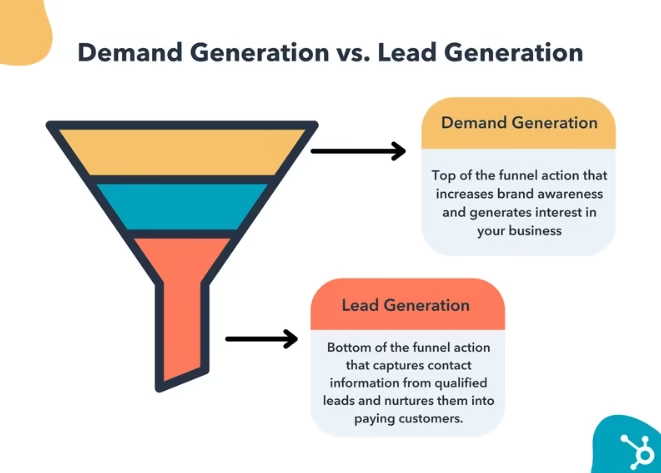Introduction
While demand generation and lead generation are integral to inbound sales, they are distinct practices often mistaken for one another.
This article unpacks the concepts of demand and lead generation, highlights their key differences, and demonstrates how they collaborate to drive business success.
What is demand generation?
Demand generation allows your business to enter new markets and engage audiences with what you offer. It involves raising brand awareness, educating your target audience, and establishing trust.
Blogging and creating useful resources are popular methods to capture audience interest through demand generation.
What is lead generation?
Through lead generation, you can nurture audience interest in your business offerings, eventually converting them into customers by convincing them that your products or services meet their needs.
Popular lead generation marketing tactics include employing CTAs with lead gen forms to gather audience contact details for subsequent emails and leveraging gated offers with lead capture forms on social media.
What is demand generation vs. lead generation?
To attract your target audience, demand generation is key, and lead generation focuses on converting those qualified prospects into customers. Wondering which strategy is more effective for achieving your business goals?
Both are essential and interdependent. Demand generation lays the groundwork by drawing in potential leads, which can then be nurtured and converted through lead generation. Here’s a closer look at their distinct roles.
Difference Between Lead Generation and Demand Generation

As previously mentioned, demand generation fuels growth, while lead generation drives conversion. The key difference is that demand generation operates at the top of the funnel, creating awareness and interest, whereas lead generation functions at the bottom of the funnel, focusing on nurturing and conversion. Effective demand generation ensures that the leads you attract are qualified and genuinely interested.
How do demand gen and lead gen come together?
Continuing with the example above, consider using blogging as your demand-generation marketing tactic. Your content draws in leads, educates them, and makes your business known to them.
Some leads might visit your blog, read an article, and then leave. However, when they search again and find another helpful article from your business, they recognize your value. Within your blogs, you include a CTA where visitors can submit their contact details, including email addresses.
Once you have their email, your lead generation efforts kick in with email nurturing, where you share content that persuades them to become paying customers.
Need assistance with your marketing strategies or looking to boost your Demand and Lead generation? Reach out to us at The Leadway for a free consultation!




